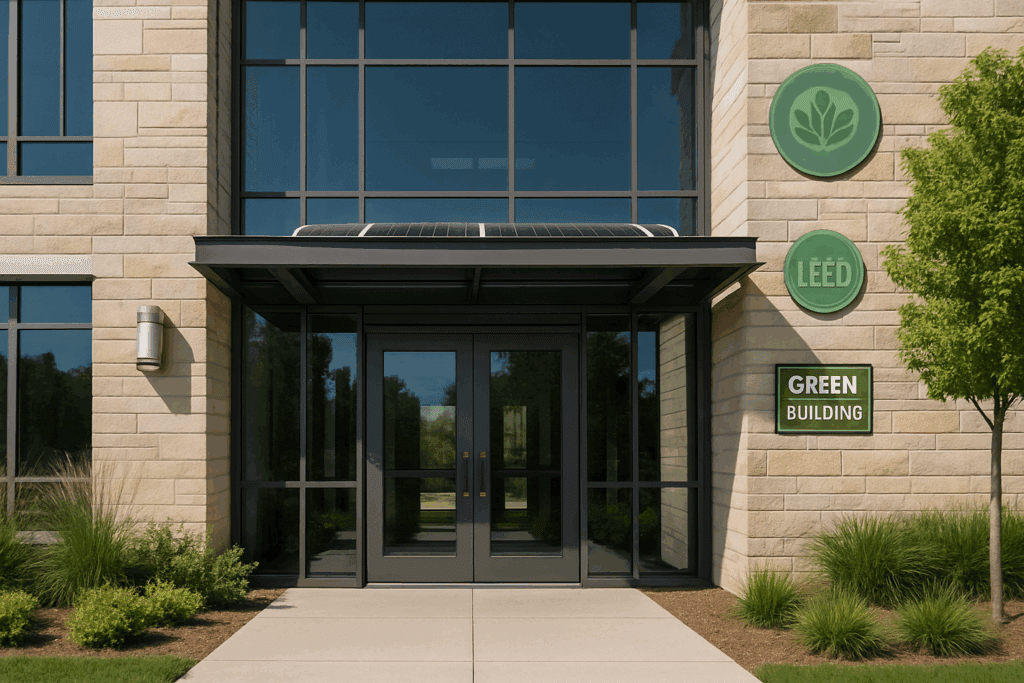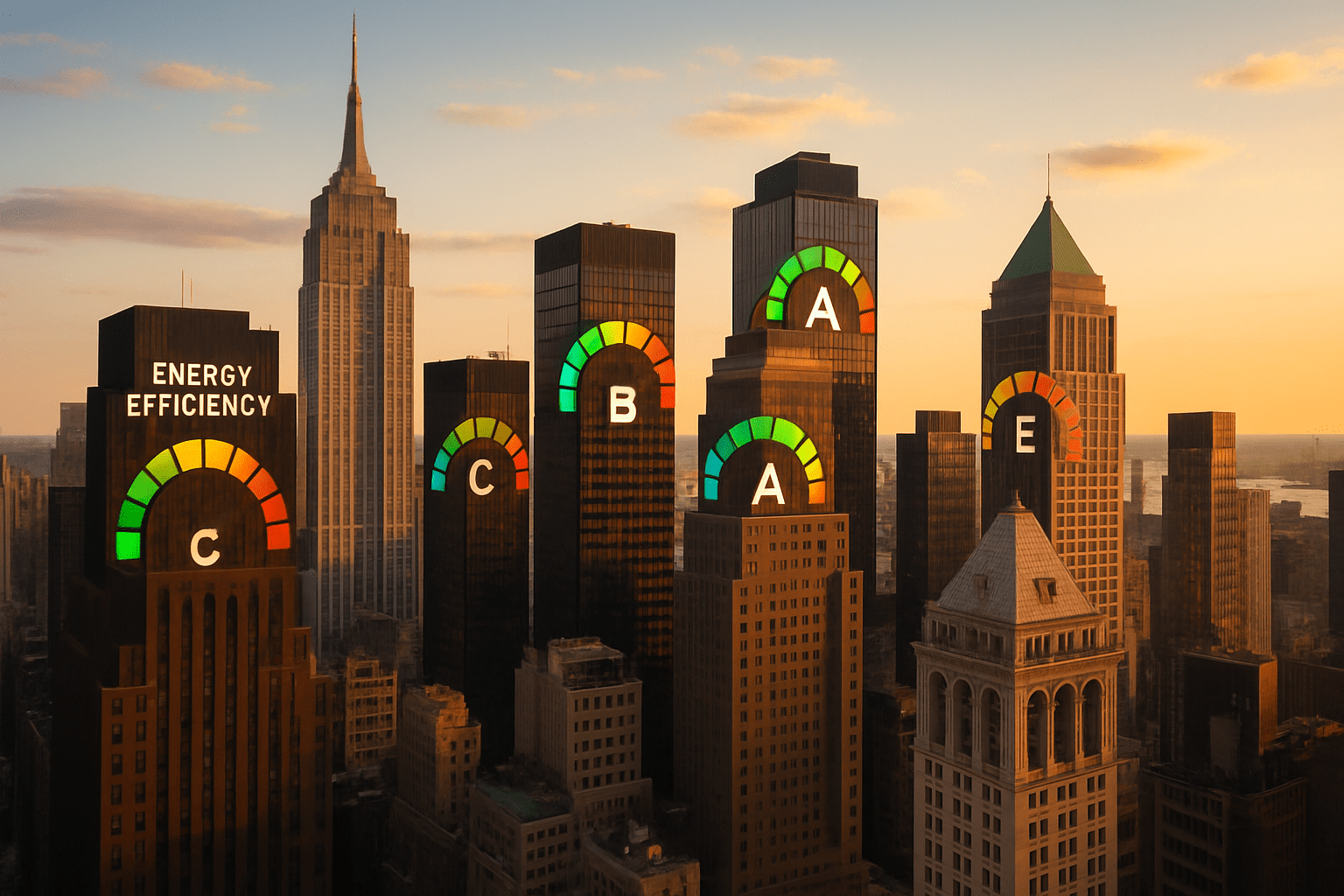U.S. cities are rewriting the rules on building efficiency—are you in the loop?
From coast to coast, municipalities are introducing bold building performance regulations aimed at cutting emissions, improving energy efficiency, and addressing climate change head-on. Whether you manage a high-rise in New York or own a mid-sized office complex in San Diego, these new laws are reshaping how buildings are designed, maintained, and operated. Sustainable building practices and green building certifications are no longer optional—they’re becoming standard. Cities like New York, with groundbreaking policies like Local Law 97, are setting the pace for the rest of the nation.

For commercial property owners and managers, staying informed isn’t just smart—it’s necessary. The wave of regulation sweeping through U.S. cities isn’t just about compliance; it’s about future-proofing your investments. From smart building technology that tracks energy usage in real time to incentives for achieving energy-efficient buildings, cities are creating both mandates and opportunities. But if you’re not plugged in, you might miss out—or fall behind. These changes are about more than saving energy; they’re about leading the charge in climate change mitigation through responsible real estate stewardship.
This blog will walk you through how U.S. cities are taking the lead, what regulations are already in play, and what’s coming next. If you’re looking to stay ahead of the curve—and out of regulatory hot water—this is where you start. Sign up for our newsletter to get more updates on sustainable building practices and learn how to adapt to this fast-changing landscape. The future of real estate is sustainable, and the time to act is now.
Regulations That Are Redefining Building Standards
Across the U.S., municipal governments are rewriting how buildings must perform—not just in terms of function, but in energy use, emissions, and long-term sustainability. These aren’t symbolic measures; they are enforceable, detailed regulations backed by legal penalties.
Notable examples leading the shift:
- New York City – Local Law 97: Perhaps the most ambitious city-level building emissions law in the country, LL97 sets strict carbon caps on buildings over 25,000 square feet. Owners who don’t meet the caps will face fines starting in 2024, scaling up dramatically by 2030. The law aims to cut emissions from buildings by 40% by 2030 and 80% by 2050. It has effectively turned energy efficiency into a compliance issue.
- Boston – BERDO 2.0: The Building Emissions Reduction and Disclosure Ordinance expands earlier benchmarking requirements into performance mandates. Buildings over 20,000 square feet must disclose annual emissions and meet declining emissions targets every five years. BERDO goes a step further by tying compliance directly to net-zero by 2050, creating a clear roadmap for commercial property owners.
- Washington, D.C. – BEPS: Washington’s Building Energy Performance Standards use a relative approach. Instead of blanket benchmarks, BEPS targets buildings performing below the city median and requires them to improve over each five-year compliance cycle. This dynamic standard pressures underperforming buildings to catch up—or face significant penalties.
In each case, the goal is not just transparency—it’s transformation. These laws are accelerating the shift from voluntary green practices to mandated performance.
The New Standard: Measurable Efficiency
Energy efficiency used to be a checkbox for eco-conscious buildings or those chasing certifications. Now, it’s a regulatory baseline. If you can’t measure your performance, you’re already behind.
Core components of these regulations include:
- Benchmarking: Most cities now require buildings to track and report their annual energy usage. Tools like ENERGY STAR Portfolio Manager are standard for this process. Benchmarking creates a performance history that cities use to enforce compliance—and tenants increasingly use to compare leasing options.
- Emissions Caps and Reduction Targets: Many regulations set absolute or intensity-based caps on greenhouse gas emissions. These thresholds often become stricter over time, forcing owners to plan upgrades in phases. Cities like New York are already setting 2030 targets that require deep retrofits well in advance.
- Public Disclosure: Energy performance data isn’t just for city records. Many cities require this data to be published online or even posted on the building itself. That puts performance into the public eye—and the leasing market.
This shift is turning energy data into an operational and reputational asset. Building owners must now treat emissions and efficiency as seriously as rent roll and maintenance schedules.
What Smart Operators Are Doing Now
With compliance deadlines approaching fast, the most prepared owners are taking action—not just to avoid penalties but to future-proof their portfolios.
Key strategies include:
- Installing Smart Building Technology: From advanced HVAC controls to lighting sensors and submetering, smart tech allows owners to monitor and manage energy use in real time. These systems often pay for themselves quickly through reduced utility bills.
- Retro-Commissioning Existing Systems: Many older buildings have systems that are under-optimized. Retro-commissioning recalibrates HVAC, lighting, and other systems to operate more efficiently—often without major capital expenditure.
- Securing Green Certifications: Achieving LEED, ENERGY STAR, or WELL certification isn’t just a badge—it often qualifies buildings for incentives and can offer a fast track to compliance. Certified buildings are also more attractive to tenants and investors who prioritize ESG performance.
- Partnering with Energy Consultants: Many owners are bringing in third-party experts to develop compliance strategies, apply for rebates, and manage performance data. These partnerships help translate policy into action—and save time navigating technical requirements.
Being proactive isn’t just responsible—it’s strategic. Early movers often secure rebates, retain tenants, and avoid the scramble when enforcement begins.
Why It Matters for Asset Value
Building performance is no longer just a cost-control issue—it’s a value driver. Regulations are pushing the market toward a new standard, and buildings that fail to keep up risk becoming stranded assets.
Impacts on commercial real estate include:
- Rising Operating Costs: Inefficient systems mean higher utility bills, especially in cities where electricity and gas prices are climbing. Non-compliant buildings may also face carbon fines, stacking regulatory costs on top of already thin margins.
- Tenant Expectations: Corporate tenants increasingly demand spaces aligned with their ESG commitments. Buildings with poor energy scores or no certifications are losing ground in competitive leasing markets.
- Investor Scrutiny: ESG is now a standard filter for institutional investors and REITs. Buildings that show strong sustainability performance often command higher valuations and face fewer obstacles in refinancing or sale.
Regulations are shifting the definition of a “high-performing” asset. Those who adapt early will find themselves in a stronger market position.
More Cities Are On the Way

If your building isn’t located in a regulated city yet, don’t get comfortable. Dozens of municipalities are drafting their own performance standards based on the models seen in New York, Boston, and D.C.
Emerging regulatory hotspots:
- Chicago: The city already mandates benchmarking and is now exploring performance standards that mirror BEPS and BERDO.
- Los Angeles: LA’s Green New Deal is pushing toward net-zero buildings, with anticipated mandates focused on existing commercial structures.
- San Francisco: Already known for progressive energy rules, San Francisco is updating its policies to align with California’s SB 100 clean energy goals.
This is a national trend, not a coastal one. Medium-sized cities like Denver, Seattle, and St. Louis are also implementing standards that require both reporting and performance improvement.
If you’re managing assets in growing metro areas, these rules are likely in your future. Preparing now means you won’t be caught off guard.
Closing the Efficiency Gap Starts With You
Cities across the U.S. are rewriting the playbook for commercial real estate—and building performance is the new MVP. In this blog, we explored how New York’s Local Law 97, Boston’s BERDO 2.0, and D.C.’s BEPS are leading a nationwide shift toward measurable efficiency and real accountability. We unpacked how benchmarking, emissions caps, and public disclosure are now baked into city policy, and how smart building tech, certifications, and expert partnerships are giving forward-thinking owners the edge.
If you’re a commercial property owner or manager, this isn’t just about following the rules. It’s about staying competitive, meeting tenant expectations, and protecting asset value in a rapidly changing market. The cities making headlines today will be the blueprint for your city tomorrow. Ready to stay ahead of the curve? Sign up for our newsletter to get the latest updates, strategies, and expert tips on sustainable building practices. You don’t have time to catch up—now is the time to lead.
VertPro.com offers tools and services to help property owners and managers improve building energy efficiency and meet regulatory standards. Whether you’re looking for instant pricing on energy audits, need support with benchmark compliance, or want to explore available building upgrade options, VertPro® provides user-friendly technology solutions to simplify the process. Their platform helps ensure adherence to over 60 Energy Benchmarking and Efficiency Laws across the country.

